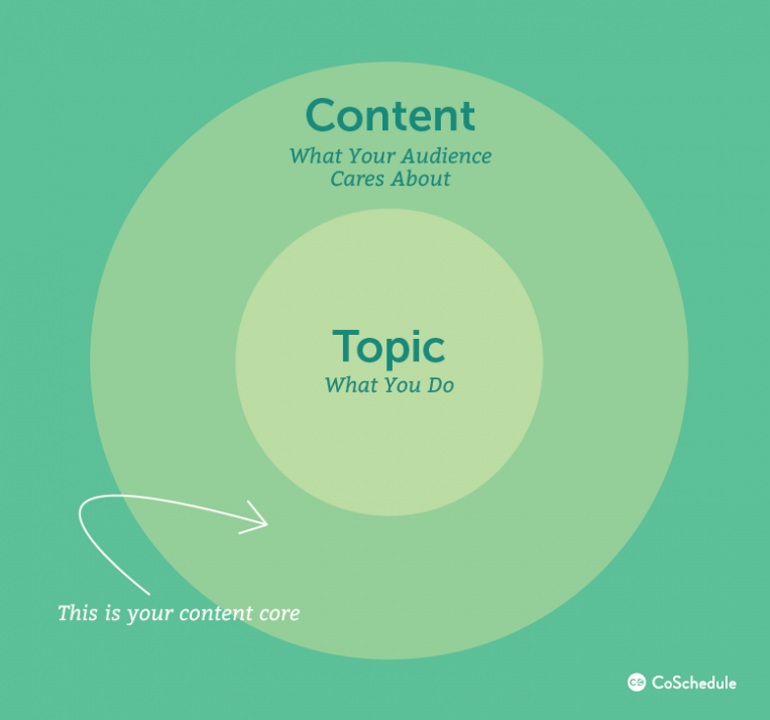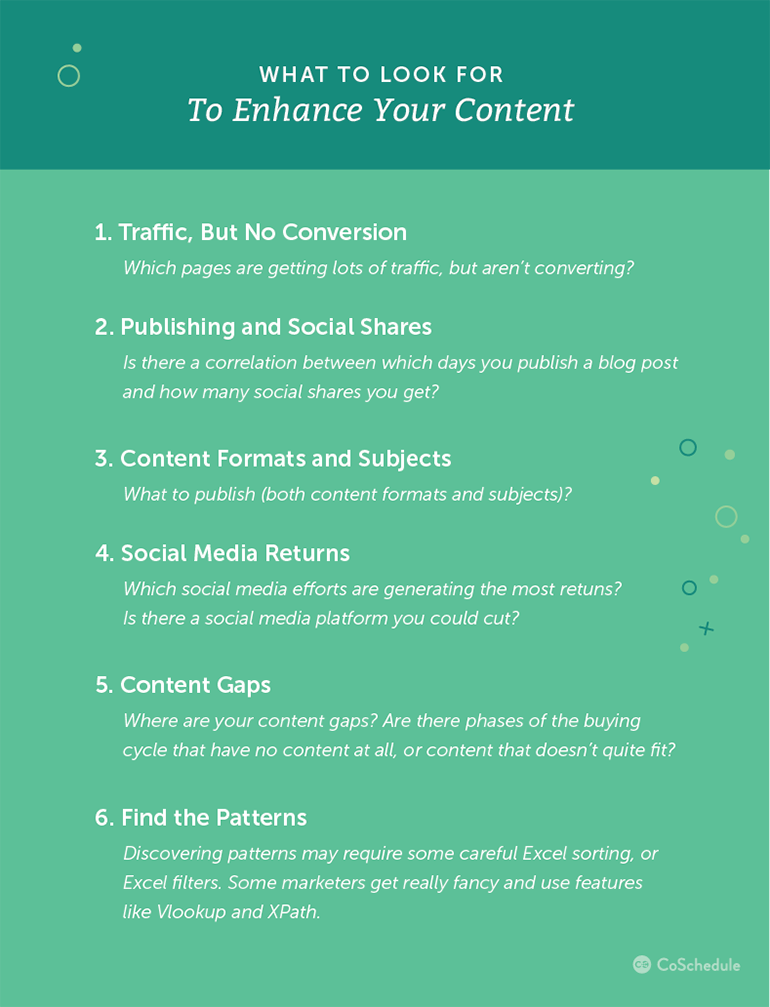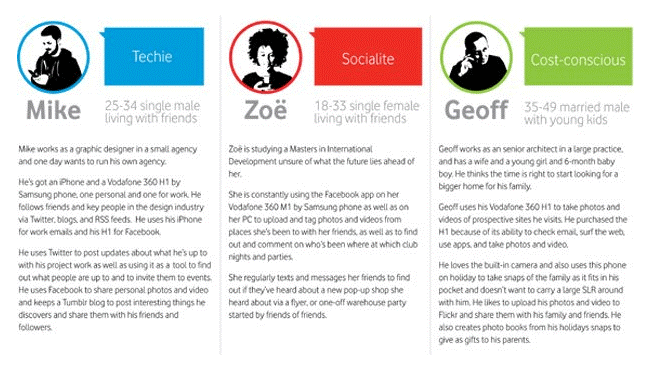TThis blog explains the content marketing process that you need, to get organized. This article is inspired from coschedule and kissmetrics. You will see great resemblances in the images used. Source coschedule
Tell your brand story or give solutions to your audience through your content
You know your business inside and out. You need to leverage that knowledge to reach your target audience with valuable, informative content turn them into customers, and keep them coming back.
A simple four-step process results in a plan that is evidence-based, strategic, and do-able. Your content marketing strategy will tell your audience how awesome your brand is and tell them how they can be part of that awesomeness. It will convert interest into sales, and prospects into long-term loyal customers.
It’s a daunting task to plan processes for yourself or for an entire team with aligning so many different tasks and it might just not be a run-of-the-mill job.
Follow this simple guide to develop your content marketing process, however you can reach out to me for guidance as well. Its true that planning takes time, however in the long run your will work faster with more objectives.
Overview of a Content Creation Process
At a high level, the picture depicts a simple process of creating content for content marketing. The process is divided into 4 buckets as mentioned here;
- Planning. research, preparation, and ideation.
- Publishing. creating and executing content.
- Promotion. promoting a piece of content.
- Measurement. analysing performance.

Step 1: Planning
It is important to understand your audience as you are reaching out to them with your brand story, services and solutions to generate more revenues.
To begin, answer these 4 questions:
- What solutions does my company, product, or service provide to my audience? How do you make your customers lives better or easier?
- Who are my current customers? Who’s buying my product right now?
- Who is my competition? Competitors can be different in both offline and online world. You probably know who your top competitors are. Do some quick keyword searches on Google and social media platforms to see if you can see any new competitor which you might not be aware of.
- How are we different from our competition? Why would people choose you instead?
Once you’ve answers to these questions, you’ll know:
- What topics your content needs to cover and which questions it should answer.
- Who is going to read, watch, or listen to that content.
- What your competition is doing and learn from their efforts.
- What you need to do to set your content apart so that people engage with your content over your competitors.
Next, develop a simple audience statement that summarizes who you’re trying to reach. Use this template and fill in the blank. I have put few industry specific examples;
Manufacturing enterprise
“[OUR COMPANY] creates content to help Indian audience to use tech products or electronics products better.”
Medical industry
“[OUR COMPANY] creates content to help global audience to align themselves with new advancements in healthcare, nursing treatment, and nursing education.”
Local businesses
“[OUR COMPANY] creates content to help Bangalore audience to find a customise solutions for their weddings through our services or solutions.”
Once you have your audience statement ready, identify 2 things;
- What you do, and the topics are of utmost value to your company.
- What your audience cares about and what topics you might cover to corelate with what your company does.

Here are few things you must do to know your audience better;
- Study your social media followers feeds. What are they sharing on Twitter, Instagram, facebook, etc.?
- Run an audience survey. Use something like Survey Monkey and ask customers or blog readers what topics or content they are interested in. Survey will also help creating a database which can be used for targeting your content.
- Study your competition’s content. In case you are not familiar with your audience, you can start with building personas which is vital for understanding who you are targeting. This is especially true when working in industries where you don’t consider yourself a deep subject matter expert (SME).
Developing Personas
In case you are not familiar with your audience, you can start with building personas which is vital for understanding who you are targeting. This is especially true when working in industries where you don’t consider yourself a deep subject matter expert (SME).
Building personas can be a time-consuming process, however, once you have your personas in place, the process thereafter becomes simple and you will know what content to generate to reach your target audience.

Below is a simple example of personas of your average customer or audience member.
To build out a simple user persona, you should include the following information:
- Age
- Location
- Occupation
- Income Level
- Level of Education
- Hobbies
- Challenges and Goals
- Personality Summary
- Values and Fears
- Favorite Blogs, News Sources, and Companies
Establish Your Goals
That’s the high-level description of what you need in a persona. Set goals for each project or campaign that you want to execute. Follow a set methodology for determining your goals.

Then, to write a simple goal statement (whether for your overall business and marketing goals, or for a specific channel, campaign, or project), follow this template:
By (2019 June) my sales will grow by 185% by publishing content every day with our success stories case studies.
You can reiterate the sentence specific to your goals. What’s necessary is that you plainly state the following:
- What you hope to achieve.
- When you hope to achieve it by.In the world of Google algorithm updates and increase in voice searches, it is important to keep them in mind while creating a content strategy. For our purposes here, we’ll break down content strategy into the answer to these 3 questions.
Develop Your Content Strategy
- What will you create? This means the kinds of content that you will create keeping in mind the new search landscape to increase visibility and channels/platforms you’ll use to reach your audience.
- Why will you create it? This ties back into your goals and the specific needs your content should address.
- How will you measure success? This entails establishing the specific metrics you’ll track against.
Performing Content Audits
To perform regular content audits, you need to have a process in place. I have put together content audit template below for you so that you can start with the audits immediately. Time saved! ?

At a high level, here are some things to look for when evaluating past content:

Generating Ideas
Once you have your content audit in place along with your buyer personas. You need to have quality creative concepts and campaign ideas in place which connects to your overall goals.
- Clients or internal stakeholders.
- Your CEO, CMO, and senior strategists.
- Your do-ers down in the trenches (writers, designers, etc.).
The easiest brainstorming process I’ve had success with looks like below:
A simple 20 mins session. Doesn’t harm anybody, right?
- Get your team in a room and have them write down every idea they can think of in ten minutes.
- Read those ideas aloud and have them rated by all the members on a three-point scale. Threes are definite ideas you should execute, two’s are ideas that require some work, and one’s are … well, you can preserve them to improve. Take every idea that’s a unanimous three and narrow down the ones you’ll settle on in ten minutes.
Feel free to adapt it to fit your purposes.
Stay tuned for Content marketing process- part 2.
In case you need consulting for content marketing process. Feel free to contact me.

 Source: Kissmetrics
Source: Kissmetrics